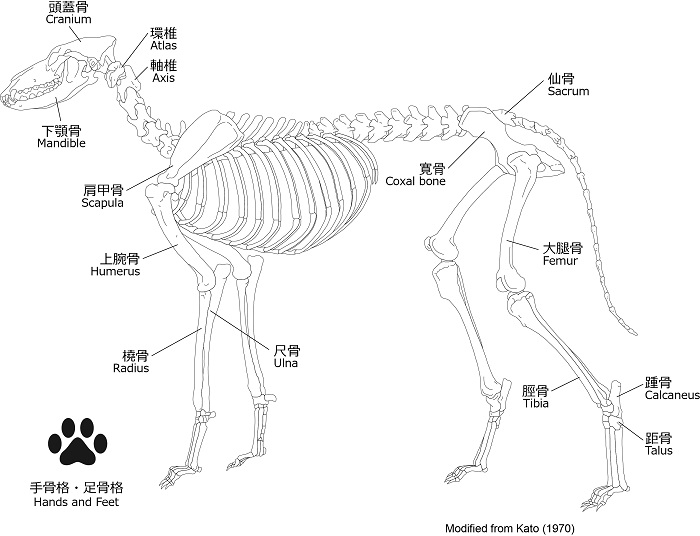
3D Bone Atlas Database Dog
Dog(イヌ)
Dog(イヌ)
Overview
Dogs (Canis lupus familiaris). The oldest dog remain was excavated from the shell layer at the beginning of the early Jomon period in Natsushima Kaizuka, Kanagawa Prefecture, about 10,000 years ago in the Japanese archipelago. Since then, more and more dog bones have been unearthed. Jomon dogs are generally small with a height of 38cm~45cm, such as Shiba Inu. The characteristic of the skull is that the dent from the forehead to the snout is small, and the face is thin with a straight nose.
In the Yayoi period, a slightly larger (modern Shikoku dog-class) medium-sized dog was uncovered from the Kamei site in Osaka Prefecture. Many dogs were excavated from the Kusado Sengen-cho site in Hiroshima Prefecture in the Middle Ages, but morphologically, they were mainly small-sized dogs with Jomon dogs lineage.
References: Akira Matsui eds. 2008 Fundamentals of Zooarchaeology. Kyoto University Press. Kyoto (in Japanese with English).
How to browse
3D data cannot be viewed on the browser.
For Microsoft Edge / Google Chrome: Right-click the part and save the PDF with "Save Link (Destination) As"
For Internet Explorer: Right-click the part and select "Save Target As" to save the PDF.
Depending on your computer, it may take some time to reflect the latest information. You can solve it by the following methods:
For Microsoft Edge: Upper right [...]-[Settings]-[Privacy, Search, Services]-Clear [Browsing Data]-Click the [Select Data to Clear] button- [Cached Images and Files] Check the box-Click the [Clear Now] button
For Google Chrome: Upper right-Chrome settings- [Other tools]-[Clear browsing history] -Select any [Period]-Check [Cached images and files] [Clear browsing history data] Click the button


